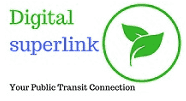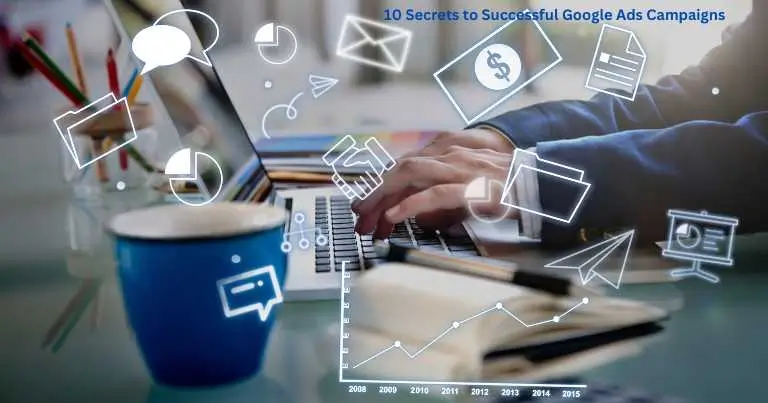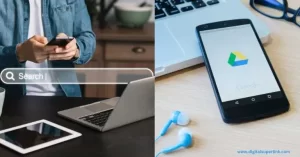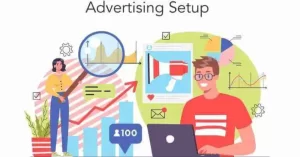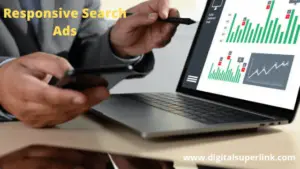Here are 10 secrets to successful Google Ads campaigns for 2024, and ready for you to expand on:
Secret #1: Embrace Automation & AI
● Discuss Google’s advanced machine-learning capabilities
● Smart Bidding strategies and how they’ll streamline optimization.
● Automated ad creation tools and potential benefits.
Google’s Ever-Evolving Machine Learning
○ Brief overview of how AI powers Google’s platforms, especially Ads.
○ Highlight rapid advancements in algorithms; they become even better at prediction and customization.
○ Emphasize that understanding these systems gives advertisers an edge.
Smart Bidding: Letting the Machines Optimize
○ Explain the basics: Target CPA, Maximize Conversions, Target ROAS, etc.
○ Discuss how real-time optimization outperforms manual adjustments.
○ Case study (optional): Successful advertiser using Smart Bidding effectively.
Automated Ad Creation: Time Saved, Potential Wins
○ Responsive Search Ads (RSAs) and how machine learning assembles headlines/descriptions.
○ Benefits: Speed, uncovering high-performing combinations you might not consider.
○ Mention Dynamic Search Ads for targeting based on your website content.
Important Considerations
○ Automation doesn’t eliminate the need for strategy – you still define goals and targeting.
○ Data accuracy is vital; the “smarter” the tool, the more quality information it needs.
○ A human touch is still needed for creative elements and overall campaign oversight.
Secret #2: Audience Targeting is Everything
● Remarketing tactics and increased personalization efforts.
● Using customer data ethically for micro-targeting.
● The increasing importance of first-party data as 3rd party data is reduced.
Remarketing: Turning Past Interest Into Action
○ Define remarketing and its power to re-engage people who already visited your site/interacted with your brand.
○ Advanced tactics: Using different lists based on past behaviors (product pages viewed, abandoned carts, etc.)
○ The need for enticing messaging to bring potential customers back.
Increased Personalization: The Right Message to the Right People
○ How Google’s data allows ads to be hyper-relevant to individuals.
○ Examples: targeting by demographics, in-market segments, and interests.
○ Explain the fine line between helpful personalization and ‘creepy’ over-targeting, and the need for transparency.
Ethical Data Use: Micro-Targeting With Responsibility
○ Acknowledge the concerns around data privacy.
○ Emphasize the advertiser’s responsibility to handle customer information ethically.
○ Discuss adhering to regulations (GDPR, CCPA) and Google’s policies.
First-Party Data: Essential as 3rd-Party Crumbles
○ Define both first-party and third-party data, explaining their differences.
○ Why the emphasis is shifting: increased restrictions, user desire for privacy.
○ Strategies for gathering quality first-party data: CRM systems, website interactions, lead magnets, and surveys.
Key Takeaways
○ Targeting is not just about who, it’s about when and with what message.
○ Building trust is key – consumers must feel data use benefits them.
○ Those who adapt well to ethical data handling and first-party data focus will excel.
Secret #3: Performance Max Campaigns are the Future
● What Performance Max is and its cross-channel benefits.
● How its focus on goals aligns with advertiser needs.
● Best practices to maximize Performance Max results.
Also, Read- 10 Proven Tips to Skyrocket Your Google Ads Performance.
What Performance Max Is: A New Breed of Campaign
○ Explain that it’s a goal-based campaign type spanning the entirety of Google’s ad inventory (Search, Display, YouTube, Gmail, etc.).
○ Highlight its emphasis on automation and AI-powered optimization.
Note: It works alongside, not replaces, existing Search campaigns.
Cross-Channel Benefits: Unified Power
○ The advantage of reaching customers across their entire journey on Google’s platforms, using a single campaign structure.
○ How Performance Max discovers new audience segments you might not initially anticipate.
○ Potential for greater efficiency and return compared to managing siloed campaigns.
In line with Advertiser Requirements: Highlight Results
○ Talk about the direct connection between business objectives and Performance Max (Sales, Leads, Store Visits, etc.).
○ Describe how the system looks for the correct audience across Google’s network at the correct minute, with advertisers providing the target.
○ Perfect for advertisers who need to deliver results but may not have a lot of resources.
Top Procedures for Progress:
○ Strong Foundation of Assets: Offer superior photographs, videos, headlines, and descriptions.
○ Clear Goal Setting: Define your campaign’s objectives and include conversion monitoring.
○ Audience Signals: Provide information to direct the optimization, such as current customer lists.
○ Patience and Learning: Allow Performance Max’s AI to operate, track initial results, and make necessary modifications.
Additional Note: For larger advertisers, it might be helpful to bring up the “asset categories” that provide organization under Performance Max.
Secret #4: Go Beyond Search – Master Diverse Ad Formats
● The power of YouTube video ads and TrueView.
● Utilizing Discovery Ads for engaging visual reach.
● Shopping Ads for e-commerce, especially visual product listings.
The Power of YouTube Video Ads & TrueView
○ Explain YouTube’s massive reach and engagement possibilities.
○ Discuss various TrueView formats: skippable ads, non-skippable, and bumper ads, each with different use cases.
○ Targeting options on YouTube: keywords, interests, demographics, and even remarketing to build sequences.
Utilizing Discovery Ads for Engaging Visual Reach
○ Define Discovery Ads – appearing in Gmail, YouTube feeds, and Google Discover.
○ Their focus is on image-heavy visuals to spark interest within feed-based scrolling behavior.
○ Discovery is a way to tap into potential customer curiosity, expanding potential reach.
Shopping Ads for E-commerce: Visual Product Power
○ How Shopping Ads feature products front and center in search results, beyond just text.
○ Integration with Google Merchant Center for automated product data feeds.
○ Importance of high-quality visuals and targeting for maximizing clicks and sales.
Key Points to Emphasize
○ Different formats appeal to consumers at different stages of their journey (awareness, consideration, purchase).
○ Visuals are universally powerful – use this beyond typical search.
○ Each format has its own best practices and strategic possibilities.
Additional Thoughts
○ Consider mentioning Display ads briefly, though their targeting is often less precise than the 3 major types focused on.
○ A note that ad budgets should be spread across formats, not siloed by type.
○ Would you like more insight into targeting approaches for video/Discovery, or perhaps some creative tips for visuals?
Secret #5: Mobile is Key. Design Accordingly
● Mobile-first design principles, as mobile searches dominate.
● Fast load times and thumb-friendly interfaces.
● Optimizing landing pages for smaller screens.
Mobile-First Design: It’s Not Optional
○ Provide statistics on how mobile searches now outpace desktops globally.
○ Explain the mobile-first indexing practice for Google, where they prioritize the mobile version of your website.
○ Discuss how designing for a small screen first forces the focus on what’s truly essential.
Fast Load Times: Seconds Matter
○ Discuss user impatience, especially on mobile devices with potentially slower connections.
○ Tools like Google’s PageSpeed Insights for identifying website optimization needs.
○ The balance between rich content (visuals) and loading performance.
Thumb-Friendly Interfaces: Design for Fingertips, Not Cursors
○ Ensure buttons and links have good spacing to prevent frustration from misclicks.
○ Consider interactions beyond static pages – swipes, and gestures typical to apps, make sense in many mobile ad settings.
○ Clean interface for ease of navigation; the reduced screen size can’t support clutter.
Landing Page Optimization for Mobile
○ Clear, concise headlines and messaging that get to the point immediately, above the fold.
○ Prioritize the main call-to-action – make it prominent and easy to tap.
○ Avoid excessive pop-ups, interstitials, and anything obscuring content on the small screen.
Important Reminders
○ “Mobile-friendly” isn’t enough – strive for experiences that feel genuinely designed for phones.
○ Test your ads and landing pages on actual mobile devices, not just emulators.
○ Pay attention to mobile-specific bid adjustments; competition can be higher there.
○ Let me know if you’d like examples of excellent mobile ad formats or resources for building exceptional mobile landing pages!
Secret #6: Compelling Visual Storytelling
● Stand-out ads need striking images and videos.
● Short, catchy videos for quick engagement.
● Leverage user-generated visuals for social proof.
Stand Out with Striking Images and Videos
○ Discuss how the human brain processes visuals faster than text.
○ Emphasize the need for images and videos to instantly grab attention in a crowded field.
○ Key elements: High quality, relevance to the product/service, emotional appeal.
Short, Catchy Videos for Quick Engagement
○ Acknowledge short attention spans, especially on mobile.
○ Videos need to capture focus within the first few seconds.
○ Leverage formats like 6-second YouTube bumper ads or in-feed teasers.
○ Highlight product benefits quickly or evoke a reaction.
User-generated content (UGC) for Social Proof
○ Define UGC: authentic videos/photos by real customers.
○ Explain how it demonstrates social proof (others use and like your product/service).
○ Discuss getting permission for use and how to creatively incorporate UGC into ads.
Actionable Tips
○ Leverage Color Theory: Colors convey moods and evoke subconscious responses.
○ Employ Pattern Interrupts: Unexpected visuals within a feed can jolt attention.
○ Test, Test, Test: Always split-test ad variations to see what resonates best with your audience.
Additional Considerations
○ Branding in Visuals: Subtle nods to your brand, even within short content, build recognition.
○ Silent Success: Videos should work flawlessly with or without sound since many don’t turn audio on.
○ Would you like some real-world examples of companies doing visual ads exceptionally well? Let me know!
Secret #7: Laser-Focused Landing Pages
● Alignment between ad messaging and landing page content.
● Clear calls to action and minimal distractions.
● Optimize for conversions, not just traffic.
Alignment is Everything: From Ad to Action
○ Explain the disconnect that happens when your ad promises one thing, but the landing page delivers another.
○ Provide examples of how your keywords, ad copy, and visuals should all match the landing page’s headline and offer.
○ Stress that this consistency builds trust and increases conversions.
Clarity of Purpose: Calls to Action That Shine
○ Your landing page must have a single, clear goal (purchase, sign-up, etc.)
○ Make the Call to Action (CTA) button visually prominent and use direct language.
○ Minimize secondary CTAs or anything that could distract the user from the main goal.
Less Clutter, More Conversions
○ Fight the urge to cram in tons of information. Focus on essential benefits.
○ White space can be your friend! Give the copy room to breathe for increased readability.
○ Avoid excess navigation; limit choices to help people follow through on the conversion path.
Optimize for Results, Not Just Beauty
Good design matters, but so performs. Your page must:
○ Load quickly on all devices, (especially mobile)
○ Have intuitive forms (if applicable) to reduce friction in the signup/purchase process
○ Use compelling copy that speaks to pain points and solutions
Key Takeaway: Your landing page is the finish line; ensure it works seamlessly with the other parts of the advertising race.
Additional Notes
○ Consider dedicated landing pages for specific campaigns/audience segments to fine-tune your results even further.
○ Utilize personalization elements where possible (like a location-based copy) to increase your page’s relevance.
Would you like some tips on A/B testing your landing pages to find the highest-converting variations?
Secret #8: Experiment, Test, Learn
● Google Ads as a platform for continuous experimentation.
● Split-testing ads, audiences, and landing pages.
● Utilizing Google’s built-in data tools for ongoing improvement.
Google Ads: Your Data-Driven Playground
○ Emphasize that the platform is built for experimentation, not static campaigns.
○ The wealth of data and analytics means there’s always something to optimize.
○ Embrace the mindset of a scientist: hypotheses, trials, and learning.
Split-Testing Everything (Well, Almost)
○ Ad variations: Experiment with headlines, descriptions, images, and video length.
○ Audience targeting: Test different demographics, interests, and in-market segments to learn about your ideal customer.
○ Landing Pages: A/B test elements like CTA text, layout, or overall messaging.
Google’s Tools Are Your Partners
○ Utilize Google’s Experiments feature for structured, clean testing.
○ Dive into Google Analytics to uncover deeper insights about user behavior on your site.
○ Google Optimize allows for more complex landing page tests and variations beyond your ads.
The “Always On” Optimization Approach
○ A successful campaign isn’t about finding one perfect setup and leaving it.
○ The market shifts, competitors change, and so must your strategy.
○ Consistent testing helps you stay ahead of the curve.
○ Small incremental improvements add up to a massive difference over time.
Key Reminders
○ Let each test run long enough to get statistically significant data.
○ Focus on testing one major element at a time to understand the true impact.
○ Document your findings! Build a knowledge base of what works (and what doesn’t) for future campaigns.
○ Let me know if you’d like specific examples of A/B tests to run, or a walk-through of how to use Google’s Experiments feature effectively.
Secret #9: Track Everything, ROI is Paramount
● Proper conversion tracking setup and linking analytics.
● Don’t focus just on clicks, focus on true business results.
● Calculating accurate cost-per-acquisition (CPA) and ROAS.
Proper Conversion Tracking: Data You Can Trust
Define conversion – any action valuable to your business (purchase, form fill, sign-up, etc.)
Explain how to set up accurate conversion tracking within Google Ads.
The need to link to Google Analytics for cross-channel insights on how ads influence site behavior.
Beyond Clicks: Metrics That Matter
Clicks are vanity metrics. Focus instead on true conversions.
Explain conversion rate – the percentage of people who clicked and subsequently completed your desired action.
Importance of understanding revenue (not just leads) generated from your ads.
The Math of Success: CPA and ROAS
Define Cost-per-Acquisition (CPA): How much you pay, on average, to acquire a conversion.
Define Return on Ad Spend (ROAS): Calculation showing revenue generated against your ad investment.
Discuss how CPA and ROAS goals should drive your bidding strategy and campaign focus.
Key Considerations
The Long Game: Not all conversions happen immediately. Understand customer journeys and the role ads play early in the funnel.
Attribution Challenges: Multi-touch conversions make understanding the full impact of ad spending tricky. Use Google Analytics attribution models as guides.
Don’t Neglect Offline Actions: If Google Ads drives physical store visits or phone calls, find ways to track these “offline” conversions as well.
Important Point: Data without clear business goals is just numbers. Know what ‘winning’ looks like to make adjustments in the right direction.
Would you like real-world examples of specific conversions to set as goals or a simplified demonstration of calculating CPA/ROAS? Just let me know!
Secret #10: Don’t Set It & Forget It: Monitoring is Ongoing
● Campaigns need continual adjustments.
● Bidding changes, budget revisions, and responding to audience shifts.
● The market is always changing, and your ad strategy should too.
Campaigns Need TLC (Think: Tender Loving Optimization)
Even highly targeted campaigns don’t run perfectly forever.
Competitors emerge, your audience preferences evolve, and even Google’s algorithms themselves are fine-tuned.
Stress that this isn’t a failure; it shows you’re paying attention and ready to adapt.
The Artful Juggle: Bids, Budgets, & Audiences
Bid adjustments: Monitor individual keyword performance and make changes needed to stay competitive.
Budget reallocations: Based on performance, shift focus toward the most successful campaigns/elements.
Audience Refinement: Data reveals if you need to broaden, narrow, or try new segments for targeting.
Eyes on the Market: Trends and Shifts
Seasonality impacts searches – be proactive before expected upswings or dips for your industry.
News events/changes in pop culture can make certain products/services suddenly more relevant.
Monitor search term reports to adjust for how customers themselves speak about your offering.
Developing the Monitoring Habit
Set a schedule: Even a brief weekly check-in helps avoid major problems down the line.
Leverage Google Ads alerts: Get notified automatically of things like low-budget or big spend swings.
Don’t react to every minor blip: Look for trends before making sweeping changes.
Key Message: Proactive management outperforms reactivity. Your ads become stronger as you learn what works best for your specific business.
Let me know if you’d like some resources on setting up effective Google Ads reporting dashboards, to make this monitoring process simpler!
Also, Read- “PPC on Google” Google AdWords Overview- Inorganic Search Result
Also, Read- 10 Tips for Facebook Ads CPC Reduction Strategies
